When it comes to welding, tig welding is one of the most popular ways of joining two pieces of metal together. It is a precise and highly skilled craft that requires a lot of practice, patience, and precision.
But it can be rewarding to learn, and the results are often beautiful. In this article, you will learn how to TIG weld different thickness metals together, taking the guesswork out of this complex process.
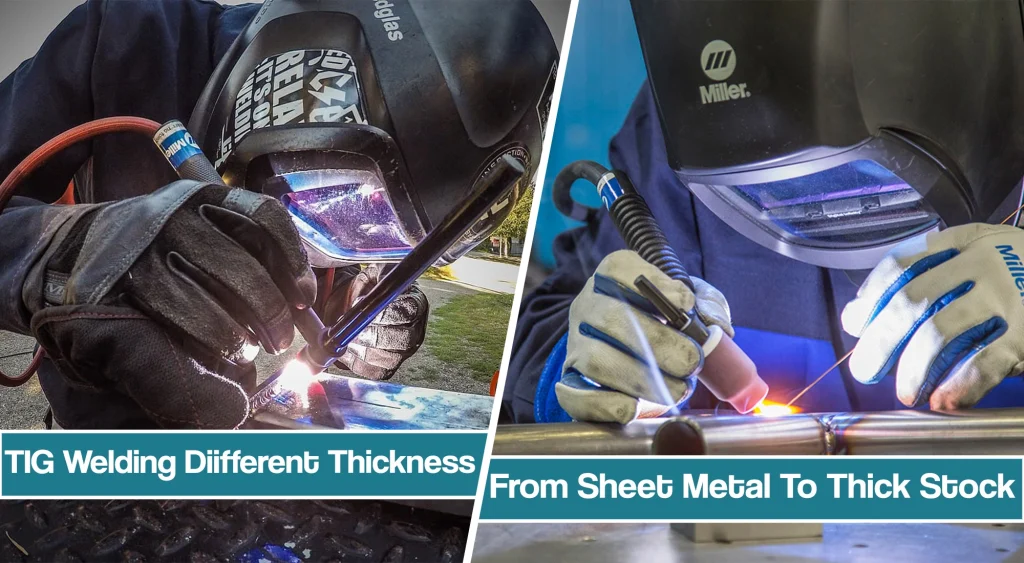
You’ll get tips on the best practices, the right equipment to use, and the welding techniques that will help you produce a strong and durable weld. We’ll also discuss the benefits and drawbacks of tig welding different thickness metals. So if you’re ready to take on the challenge of mastering this skill, let’s get started!
Overview Of GTAW And How To TIG Weld Different Plate Thickness
TIG welding (GTAW) is a special type of welding that uses a non-consumable tungsten electrode to provide heat for melting the metal. It is commonly used in high-precision welding and fabrication of aluminum, stainless steel, magnesium, nickel alloys, copper alloys, and other exotic metals. This form of welding is superior to other types because it requires less heat input and provides excellent control over the weld puddle shape and size.
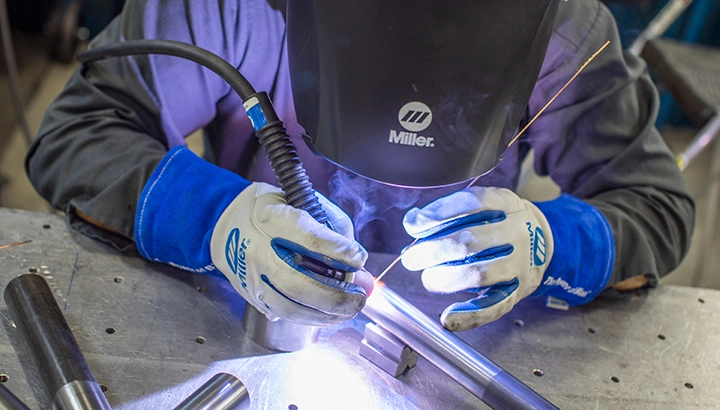
Before TIG welding, the metal pieces must be properly prepared. This includes grinding or filing off any paint or rust, as well as cleaning them with a wire brush or sandpaper. The metal must also be clamped together firmly before starting the weld.
The next step is selecting the right filler material for the job. The filler material should match the composition of the base metal in order to achieve optimal results. Welding parameters play a crucial role, and you want to hit the sweet spot. Don’t forget about shielding gas and proper dab the filler technique.
TIG welding requires patience and practice in order to get good results – but with enough time and dedication, you’ll be able to achieve beautiful welds capable of standing up against any test!
How TIG welding Deals With Thin Metal and Thick Pieces
When it comes to different thicknesses of metals, TIG welding processes have their own set of advantages and disadvantages. When working with sheet metal, GTAW offers superior weld quality and strength due to its precise heat control.
However, this type of welding also requires more skill than MIG welding or stick welding when working with thin materials, as it can easily cause warping or burn-through if not done correctly.
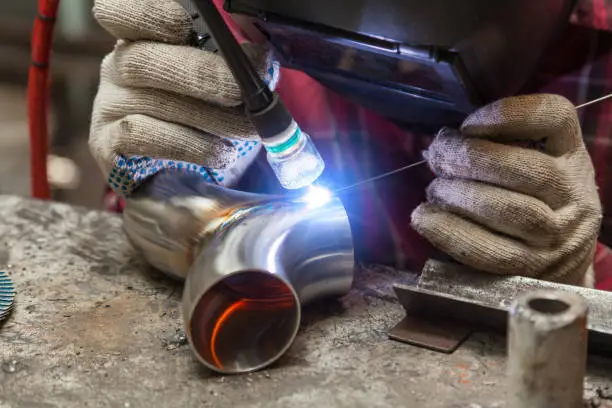
On the other hand, TIG welding is an excellent option when working on medium-thickness material, as its precise heat input allows for cleaner welds with minimal distortion. The process also produces less spatter than MIG or stick electrodes which makes it ideal for applications where cleanliness is essential such as in medical device manufacturing or food processing equipment.
For thick stock materials such as steel plate or pipe, TIG welding offers excellent penetration and strength but requires more skill from the welder due to its higher amperage requirements (150A – 200A). A common mistake made by inexperienced welders when working on thicker stock materials is inadequate cleaning before starting the job, which can lead to porosity in the finished welds. Additionally, too much amperage run on thicker material can cause an over-weld situation where too much material has been melted away, resulting in a weakened joint.
TIG Welding Sheet Metal
Sheet metal is defined as a metal that is less than 0.06 inches or 1.5 millimeters in thickness and can include aluminum, stainless steel, and mild steel. The challenge with welding thin metal comes from the fact that it requires just enough heat.
Too little heat will result in an incomplete weld, while too much heat can cause warping or damage to the sheet metal itself. The TIG welding process also requires more precision than other types of welding, as it typically involves more intricate designs and patterns.
In order to effectively TIG weld thin metal, it is important to use a low amperage setting on the welder.
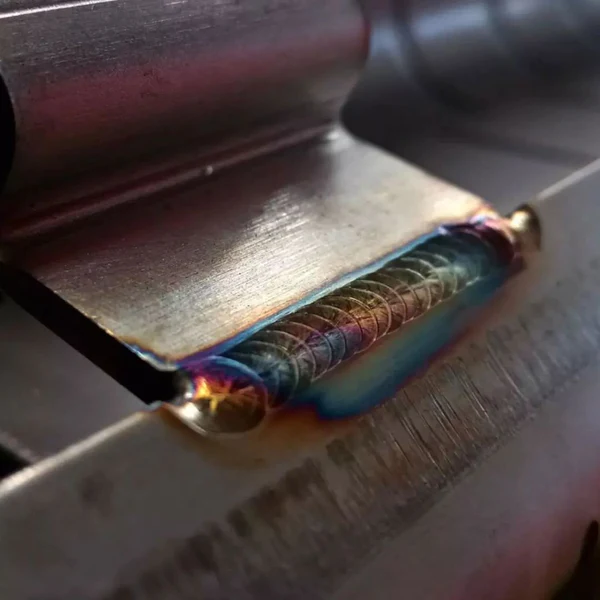
Typically, amperage is between 10 and 25 amps for thin materials like aluminum and stainless steel and between 20-35 amps for thicker materials like common steel. In addition, it is important to use clean filler rods with low melting since they are more prone to contamination from dirt or oxidation, which could cause defects in the weld itself.
Finally, using pulse arc welding can help reduce distortion caused by heat when working with thinner piece materials such as aluminum or stainless steel since it allows for short bursts of high amperage followed by lower amperage cooling periods which prevents excessive build-up of heat at any one point on the material being welded.
TIG Welder for Sheet Metal Welding
To weld sheet metal, you will need a TIG welder that is capable of welding thinner material. Most TIG welders have an adjustable output current (in amperes) ranging from 10-200A, but for welding sheet metal, you should use the lowest current setting possible, usually around 20-40A. For most applications, AC current is preferred because it helps to clean the surface of the material being welded and limits penetration, which is crucial when dealing with thin materials.
In addition to having an adjustable output current and using AC power, it’s also important to make sure your machine has pulse capabilities and adjustable balance controls so that you can fine-tune the arc characteristics for optimal results.
The adjustable output helps to ensure that the power is not too high or too low, while the pulse and balance controls allow the user to adjust the arc length and waveforms to achieve an even heat distribution across the weld. Additionally, these settings can be used to reduce splatter caused by high-heat inputs. With these controls, welders are able to achieve better control over their welds when working with thin sheet metal.
Finally, make sure your welder has a foot pedal or torch switch control for easy operation and precise heat control when welding thin materials like sheet metal.
Right Tungsten For Sheet Metal
When TIG welding sheet metal, it is recommended to use a 2% thoriated tungsten in the range of 1/16″ to 3/32″ in diameter.
This type of tungsten is the most common and is the most efficient when working with thin metals. It is also important to note that when using a 2% thoriated tungsten, it should not be used with aluminum as this will cause contamination.
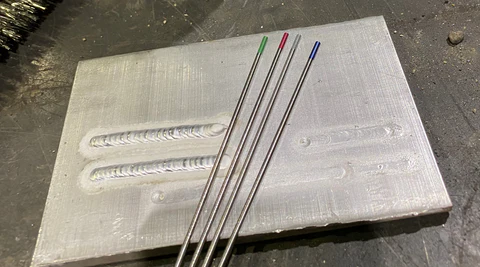
Alternatives to 2% thoriated tungsten include pure tungsten, ceriated tungsten, and lanthanated tungsten. These types of tungsten are also suitable for use when welding sheet metal, however, they require higher amperage settings than thoriated tungsten and may not provide as much penetration.
On top of this, it is important to use a tungsten sharpener to ensure that the tungsten tip is always sharp and clean before each weld. This will focus an tight arc on a small area and help reduce contamination and improve weld quality. However, TIG welding aluminum will require a balled or flattened point.
Filler Rod Type And Size
When TIG welding sheet metal, the type, and size of filler rod you need to use will depend on the weld metal. For steel, a mild steel ER70S-2 or ER70S-6 filler rod is designed to match the composition of mild steel and will provide strong welds.
These rods are typically 1/16 inch in diameter and come in 36 inch lengths, although other sizes may be available.
For aluminum, an aluminum 4043 or 5356 filler rod is recommended. These rods are specifically designed for welding aluminum and will form strong bonds between the two pieces available in diameters ranging from 1/16 inch up to 3/32 inch and come in 36 inch lengths.
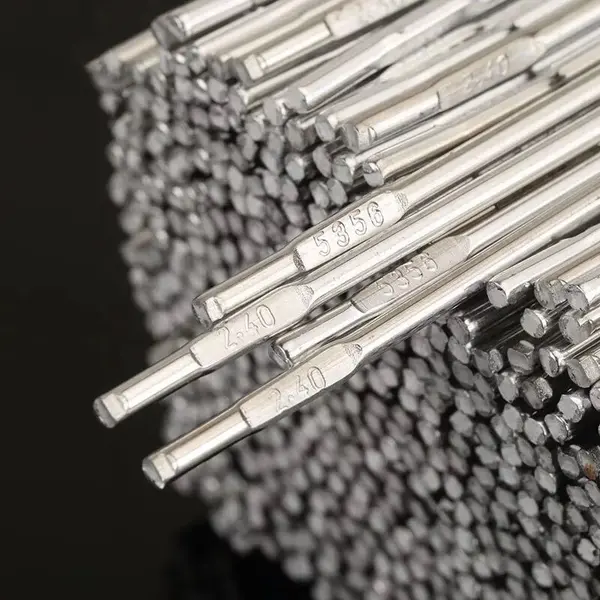
Finally, for stainless steel, an ER308L or 309L filler rod is recommended. These rods contain higher levels of chromium and nickel which have been found to provide strong welds between stainless steel components also available in diameters from 1/16 inch up to 3/32 inch and come in 36 inch lengths.
Crucial Welder Controls
When welding sheet metal with a TIG welder, it’s important to use the correct amperage and other welding parameters to prevent burn-through, distortion, or wrapping. The amperage should be set at a low level to reduce heat input and minimize the warping of the metal. For thin sheet metal (18 gauge or thinner), an amperage range of 10-20 amps is recommended. For thicker sheet metal (up to 1/8 inch thick), a higher amperage range of 20-40 amps is recommended. The gas flow rate should be set at 15-20 cubic feet per hour (CFH).
Welding sheet metal will require setting a pulse frequency, commonly in the range of 0.5 to 200 Hz. Adjusting the pulse will limit the heat, yielding strong TIG welds. DCEN polarity is the most common choice for TIG welding when the cleaning action of the DCEP process is not needed.
Shielding Gas Choice
When TIG welding sheet metal, the best shielding gas to use is typically Argon. This inert gas provides excellent arc stability and penetration, as well as reduces oxidation in the weld area.
Other gases can be used when TIG welding sheet metal as well, but they may not provide the same quality of welds or ease of use as Argon. For example, pure helium can be used for increased heat input and improved weld penetration on thicker materials, but it should typically be avoided for thinner materials because it can cause excessive heat, spatter, and porosity in the finished welds.
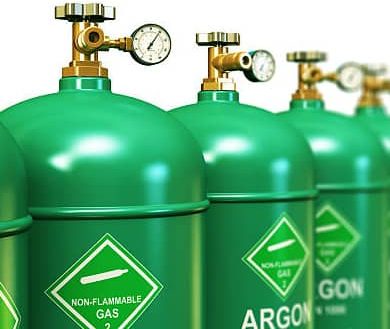
Alternatives to Argon include argon-rich mixtures (e.g., 90% argon / 10% He) or other inert gases for increased heat input or reduced oxidation levels in the finished welds. Ultimately, each type of material has its own unique welding requirements so it’s important to do your research before beginning any welding project to ensure you are using the correct shielding gas for the job at hand
Weld Preparation and Proper Technique
Before you start welding sheet metal, it is important to prepare the workpiece by cleaning it with a wire brush, a grindstone, or other abrasive tools and remove all the mill scale. It is also important to make sure that there are no sharp edges on the metal that could cause sparks and weld spatter. The welding torch must also be set up correctly to ensure proper operation and heat input.
When starting, use short bursts of current on thinner metal while continuously moving along the joint line in order to minimize heat input into the surrounding area. It is important not to stop during a single pass of welding; rather, move steadily along until reaching the end of that particular pass before stopping completely and allowing the welded area to cool down before continuing on with another pass if necessary.
This technique helps prevent warping and distortion in thinner metals due to sheet metal’s tendency for thermal expansion and contraction when heated quickly and then cooled down abruptly. If you cannot successfully control it, you can use a backing bar that acts as a heat sink.
TIG Welding Medium Thickness Steel
TIG welding medium-thickness metals refers to joining two or more pieces of metal with thicknesses between 1/8 inch and 3/8 inch. This type of welding is suitable for joining different types of metal, including aluminum, stainless steel, and mild steel.
The good sides of TIG welding medium-thickness metals include its accuracy and precision since it produces welds that are very uniform in shape and size.
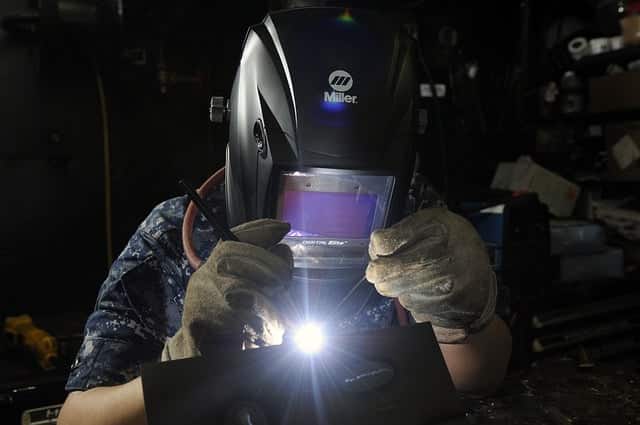
It also has a low level of heat input which allows excellent weld pool control. In addition, TIG welding provides clean welds with minimal slag and spatter.
However, there are also some drawbacks associated with TIG welding medium-thickness metals. For example, it can be difficult to achieve full penetration welds when working on thicker materials due to the high amperage required for proper fusion. Additionally, because this type of weld requires preheating prior to welding, it can take longer than other methods such as MIG or stick welding. Finally, TIG welding may not be suitable for certain applications due to its slow speed compared to other methods.
TIG Welder For Medium-Thick Metal
TIG welding medium-thickness metals is a complex art, but with the right equipment and a little practice, it can be done successfully. To TIG weld medium-thickness metal effectively, you will need a powerful machine with adjustable amperage and other specific features.
The most important factor when TIG welding medium-thickness metals is the amperage.
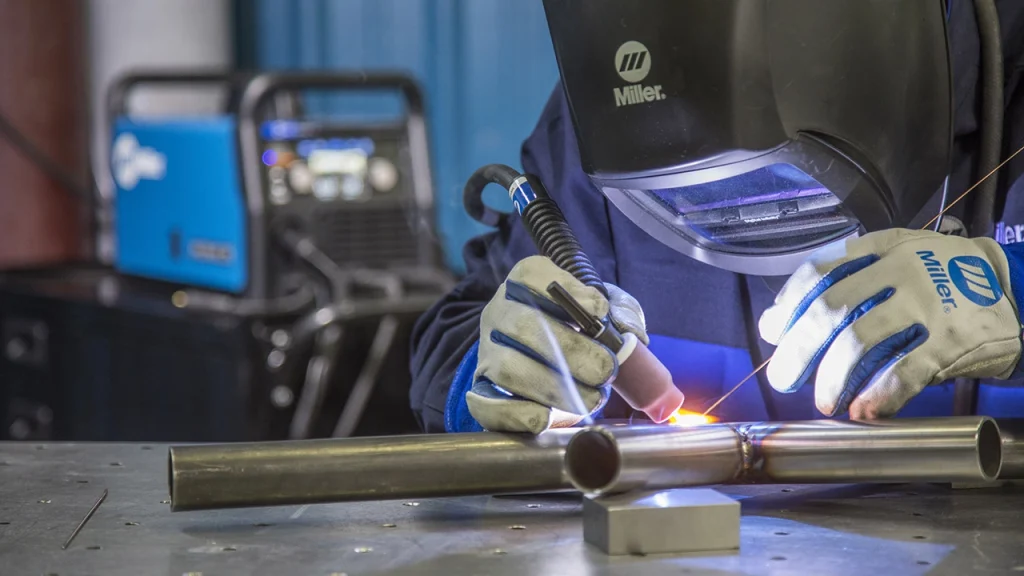
You will need to adjust the amperage based on the material thickness and the size of your weld joint. Generally speaking, for most mild steel applications, you should use an amperage between 60 and 200 amps. For thicker materials such as stainless steel or aluminum, you should use an amperage between 80 and 250 amps. Additionally, for thicker materials like stainless steel or aluminum, it may be beneficial to use higher frequencies (i.e., more than 200 Hz). This helps reduce heat buildup in the weld joint which can lead to cracking or warping of the material being welded.
Additionally, a foot control pedal, hand torch, gas lens, adjustable inductance setting, crater switch and AC balance control all work together to help ensure you get the best possible results when welding medium-thickness metals.
Tungsten and Filler Metal Selection
Generally, the best tungsten for these types of applications is 2% thoriated tungsten with an electrode diameter of 1/16” (1.6mm). Thoriated tungsten provides superior arc starting and stability when compared to other types of tungsten, such as lanthanated or ceriated varieties. It is also not prone to contamination from airborne particles or oxidation, which can cause poor arc starts. Thoriated tungsten also has a higher electron emission than other varieties making it better suited for DC welding applications.
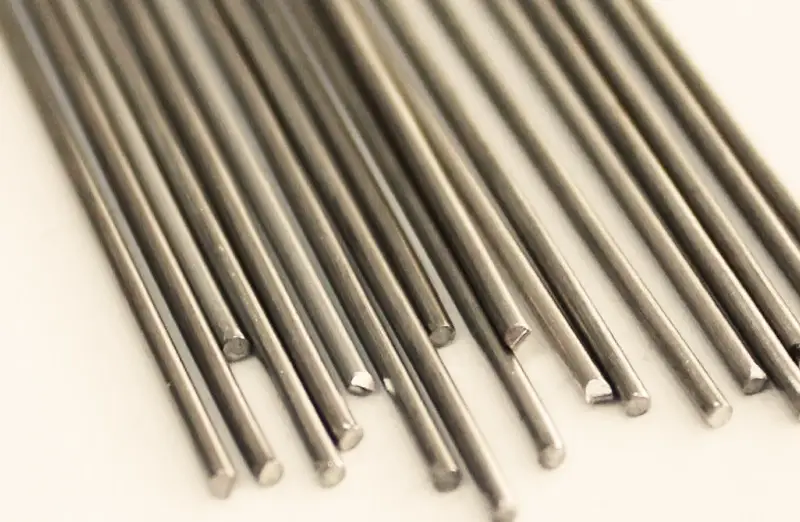
For medium-thickness metals and standard amperage settings, 1/16” (1.6mm) electrodes are usually sufficient, although 1/8” (3.2mm) electrodes can be used in some cases if more heat input is needed. there are other options available such as pure or lanthanated tungsten, which may provide better performance in certain situations depending on individual preferences or application requirements.
The size and type of filler rod used will depend on the thickness of the material being welded, as well as the welding current being used. Generally speaking, for medium-thickness materials (3/16” – 3/8”), a 1/16” diameter ER70S-2 mild steel filler and a 1/16″ ER70S-6 mild steel filler rod should be used.
Preparing The Weld Area And Technique
Prior to welding, the material should be clean, free of rust or other contaminants, and properly prepped. A good surface finish will help ensure an even heat transfer when welding. The joint should be properly aligned with the proper gap width between pieces being welded; too small a gap will result in inadequate penetration, while too large a gap can cause excessive warping of the material.
When beginning the arc strike on one side of the plate, it is best practice to start at low amperage and slowly increase as needed while maintaining consistent travel speed across both sides of the plate; this will help ensure adequate penetration and prevent warping or excessive heat buildup in any one area of the plate due to too high an amperage setting or slow travel speed.
Keep your torch angle consistent throughout all passes; too steep an angle can lead to inadequate penetration, while too shallow an angle can result in inadequate fusion of material at either side of the joint due to lack of shielding gas coverage from either direction.
TIG Welding Thick Metals
TIG welding is suitable for joining thicker metals due to its superior quality results and ability to create precise designs on thicker metals that would otherwise be difficult, if not impossible, using other methods such as MIG or Stick Welding.
The advantages of TIG welding thicker piece are numerous. The most significant advantage is the high-quality welds that can be produced with this process.
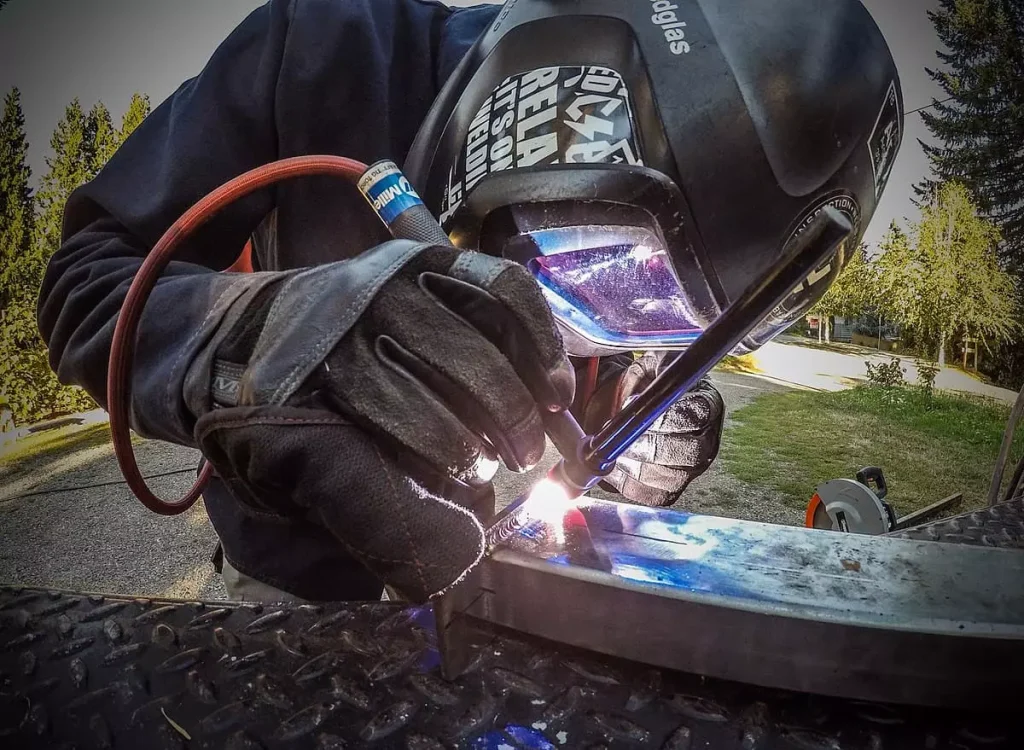
TIG welding produces clean welds due to precision control over the width of the bead, making it ideal for creating intricate patterns or other complex designs on thicker materials.
Despite its advantages, there are some drawbacks associated with TIG welding thick metals as well. The setup time can be longer than other methods since more equipment needs to be set up before beginning the process. This process requires higher levels of skill than other methods in welding butt weld, T joint, Lap joint, or any configuration, compared to MIG welding or Stick welding. So it may not be suitable for novice welders or those who don’t have experience.
TIG Welder For Thick metal
When welding thicker metals, you will need a welder with a higher amperage rating. Generally, for welding thick metal that is 1/4” or thicker, you will need an inverter-based power source that can output at least 200 amps. With this kind of power, you will be able to weld up to 3/4” thick steel.
In order for your welds to be strong and clean, your welder should have adjustable parameters so that you can fine-tune the heat and current settings according to the thickness of the metal being welded.
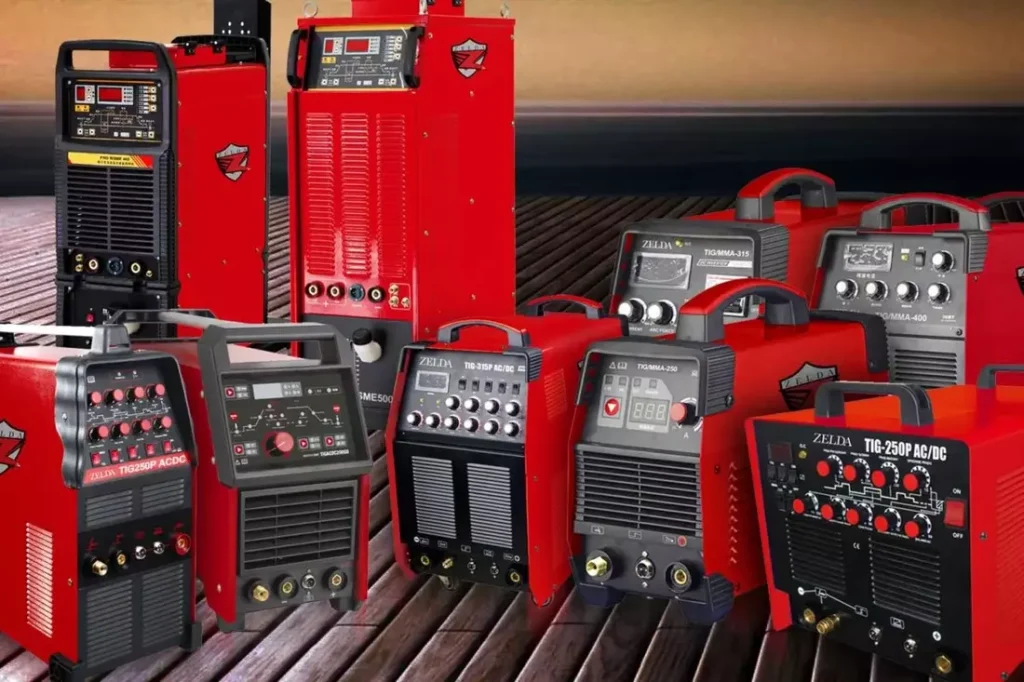
It is also important to have pulsed current features – this feature gives you more control over the arc and helps reduce spatter in your welds. Additionally, having a high-duty cycle rating allows you to weld longer without having to worry about overheating or damaging your equipment.
Finally, if possible it is best to invest in a TIG welder with an AC/DC converter – this allows you to use both AC (for aluminum) and DC (for steel) currents when welding different materials. This makes it easier and more efficient when working on projects that involve multiple types of metals.
By investing in a quality TIG welder with adjustable settings and features such as pulsed current and AC/DC converters specifically designed for thick metal welding projects, you can ensure strong and clean welds every time!
Weld Preparation And Practices
The first step is to make sure that the metal is properly cleaned and prepped. It should be free of dirt, grease, paint, rust, and other contaminants that might interfere with the welding process. Proper surface preparation will help ensure a strong and consistent weld.
Once the metal is prepped, it’s time to select the proper welding equipment for the job. For TIG welding thick metals such as sheet metal or thick stock, a power source capable of at least 200 amps is typically recommended. It’s also important to use a tungsten electrode that has been ground correctly and is sized according to the material thickness being welded. Tungsten ranges up to 1/8 inch for thicker materials such as steel plate or pipe wall thicknesses over 1/4 inch.
TIG welding thick metals requires selecting the correct filler material and creating a root pass if necessary. A root pass involves depositing filler material around the edges of two pieces of metal being joined together in order to create an even gap between them before overlapping layers are added on top during subsequent passes.
TIG Welding Root Pass On Thick Pieces
TIG welding offers several advantages when it comes to root passes on thick metals. Its precision allows for greater control over weld bead geometry while still providing strong bonds between the base metal and filler material at higher temperatures than other techniques like MIG or FCAW can provide.
With its versatility and ability to create intricate designs or complex shapes in thicker materials, there are few better options than TIG welding when it comes to root passes on thick metals.
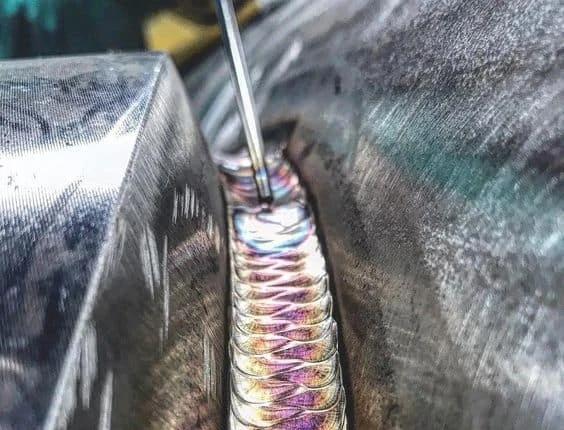
One of the biggest challenges is that it requires more skill than other techniques like MIG or FCAW, as it requires greater control and precision from the welder. Additionally, because TIG relies on the use of filler material and higher temperatures, it can be more time-consuming when using multiple passes and require more setup than other methods like MIG or FCAW.
TIG Welding Dissimilar metals
IG welding is good for welding dissimilar metals in certain circumstances. TIG welding is preferred for joining two dissimilar metals because it produces the highest quality welds. This is due to its ability to produce a clean, precise, and narrow weld bead with minimal heat input, which helps reduce the risk of warping or cracking the joint.
On the other hand, TIG welding can be difficult and time-consuming compared to other welding processes, such as MIG or Stick welding. Additionally, some metals are not suitable for TIG welding due to their high reactivity with the tungsten electrode.
Conclusion
TIG welding different thickness metals require certain techniques and tips to ensure a successful weld. Sheet metal, medium-thickness metal, and thick stock all require unique approaches to be effectively tig welded.
It is important to understand the differences between each type of material and use the right equipment, settings, and techniques in order to make a strong weld. With some practice and the right resources, anyone can become an expert at tig welding different thickness metals.
Resources:
- https://bakersgas.com/blogs/weld-my-world/tips-for-tig-welding-thin-steel
- https://unimig.com.au/how-to-tig-sheet-metal-for-a-perfect-weld/
- https://www.millerwelds.com/resources/article-library/welding-tips-the-secret-to-success-when-tig-welding
- https://www.weldingtipsandtricks.com/how-thick-of-material-can-you-weld-with-a-tig.html
- https://unimig.com.au/how-to-tig-sheet-metal-for-a-perfect-weld/





